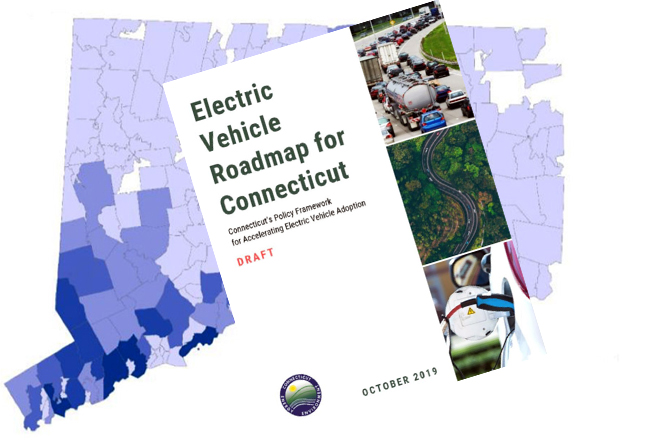Connecticut considers new goal of 500K electric vehicles by 2030
The Department of Energy and Environmental Protection (DEEP) has issued a draft report proposing a goal of 500,000 electric vehicles in Connecticut by 2030.
The new goal, as outlined in the draft edition of “Electric Vehicle Roadmap for Connecticut,” supersedes an earlier state goal of 150,000 electric vehicles on the road by 2025. However, the draft report also acknowledged that electric vehicles account for only 2% of all light-duty vehicles sold in the state and proposed an aggressive strategy to boost sales.
 “To maintain the rate of sales needed out to 2030, it is essential that Connecticut implement policies and programs to support this rapidly evolving market,” the report stated. “This includes, but is not limited to, providing targeted vehicle rebates, increasing consumer education and outreach, electric rate design that provides incentives for off-peak charging, and increased charging infrastructure.”
“To maintain the rate of sales needed out to 2030, it is essential that Connecticut implement policies and programs to support this rapidly evolving market,” the report stated. “This includes, but is not limited to, providing targeted vehicle rebates, increasing consumer education and outreach, electric rate design that provides incentives for off-peak charging, and increased charging infrastructure.”
The lack of vehicle charging options was cited as among the top three barriers to a wider consumer embrace of electric vehicles, following concerns of price and vehicle performance range. The draft report observed there are 344 publicly accessible charging stations in Connecticut with a total of 823 charging outlets.
“Further investments in charging infrastructure, including fast charging, will be critical,” the draft report added.
To date, the largest share of electric vehicle registration is found in Fairfield County, followed by Hartford and New Haven, while the adoption rate is lower in rural sectors due to what the draft report defined as rural drivers”™ concerns of vehicular range and being able to drive the vehicles in snow or unpaved roads.
The draft report also highlighted the absence of vehicle ownership among many of Connecticut”™s low-income residents, but also pinpointed this demographic as a potential consumer audience for electric models.
“Despite the financial hardship of vehicle ownership, many residents in low income households ”“ particularly in areas where housing, employment and other fundamental destinations are dispersed and not easily accessible by public transit ”“ continue to rely on personal vehicles to meet mobility needs,” the draft report stated. “Although high upfront costs, reduced access to low-interest financing, and reduced opportunity to benefit from federal tax credits hinder LMI residents”™ opportunities to purchase EVs, the state can equitably broaden low-income residents”™ access to EVs through innovative incentive programs.”